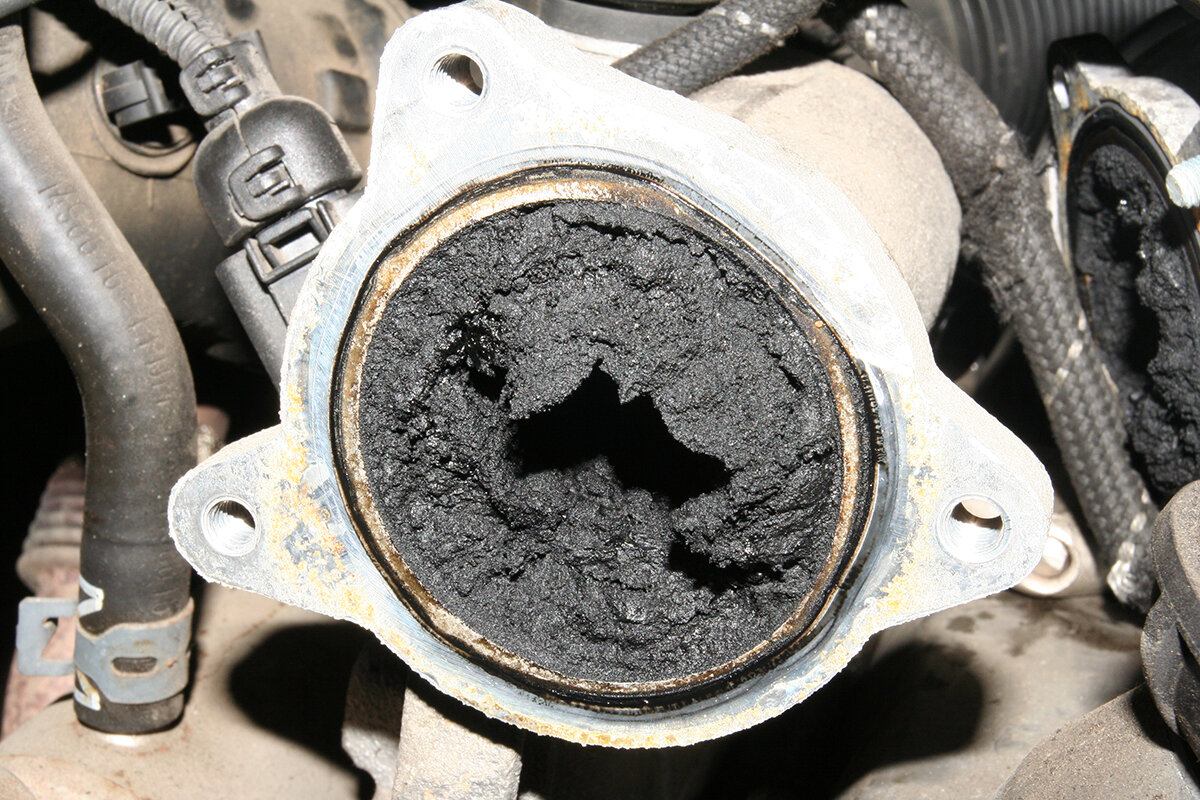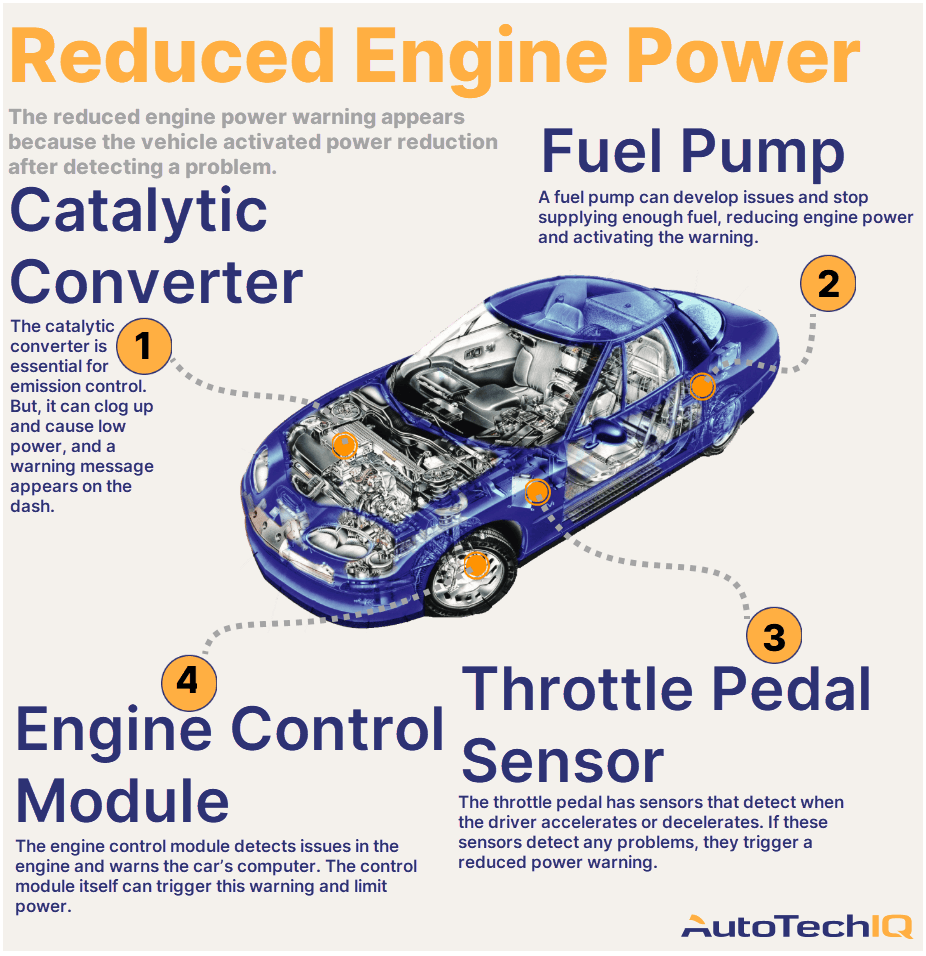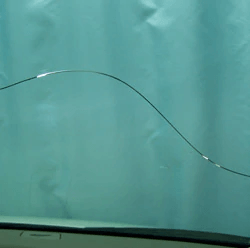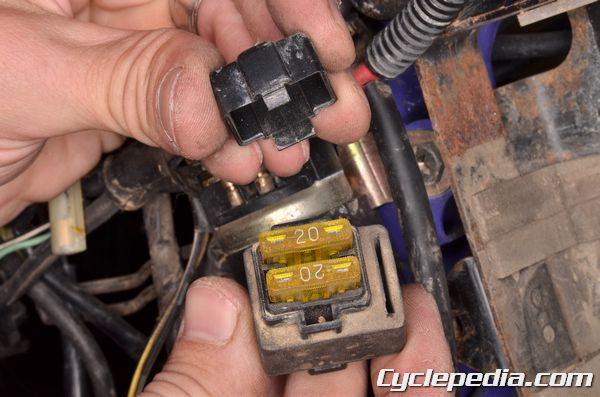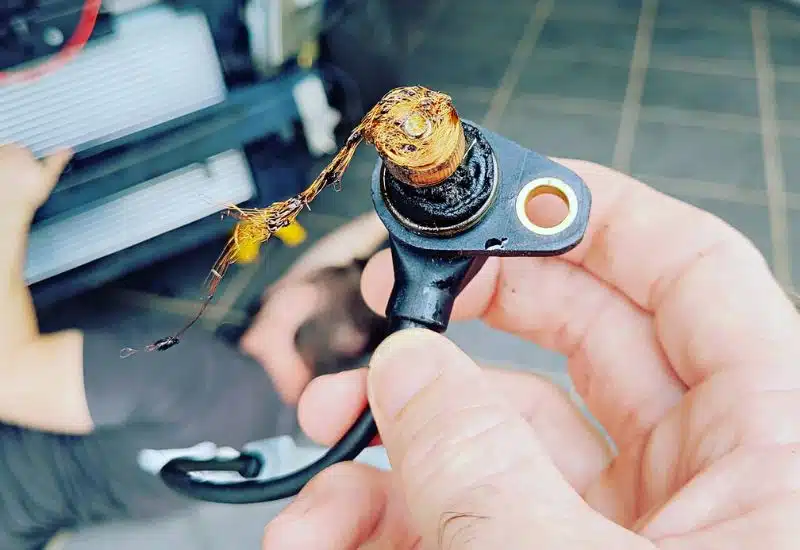Can a Bad Egr Valve Cause Coolant Loss
A faulty EGR valve typically does not cause coolant loss directly. Other issues are more likely to be responsible for coolant disappearing from the system.
Understanding the symptoms and consequences of a bad EGR (Exhaust Gas Recirculation) valve is crucial for maintaining vehicle health. The EGR valve plays a pivotal role in reducing emissions by recirculating a portion of an engine’s exhaust gas back to the engine cylinders.
Yet, coolant loss signals problems elsewhere, such as a blown head gasket, cracked engine block, or a leaking radiator. When your car starts losing coolant without any apparent leaks, it’s essential to consider these more common causes rather than the EGR valve. Keeping an eye on your vehicle’s performance and conducting regular maintenance checks helps in early detection and prevention of serious engine damage.

Credit: www.youtube.com
The Role Of The Egr Valve In Your Vehicle
The Role of the EGR Valve in Your Vehicle is a vital aspect that often goes unnoticed. This small component plays a significant part in your car’s performance and health. Understanding the EGR valve is the first step to knowing its impact on your vehicle’s operation and potentially, on issues like coolant loss.
Functions Of The Egr Valve
The EGR valve, or Exhaust Gas Recirculation valve, has a clear job. It recirculates a portion of the exhaust gases back into the engine. This process has several key functions:
- Reduces combustion temperature, which prevents the production of harmful nitrogen oxides.
- Improves engine efficiency by allowing a more complete burn of the fuel.
- Helps prevent engine knocking, which can damage your engine over time.
Importance In Emission Control
Why is the EGR valve so important? Its main role is tied to emission control. By reintroducing exhaust gases, it lowers the emissions your car produces. Here’s why that’s crucial:
| Impact | Benefit |
|---|---|
| Less NOx emissions | Supports a cleaner environment. |
| Optimized fuel consumption | Can improve gas mileage. |
| Enhanced engine longevity | Keeps the engine running smoothly for longer. |
With these functions and benefits, the EGR valve becomes an integral part of both vehicle performance and environmental conservation.
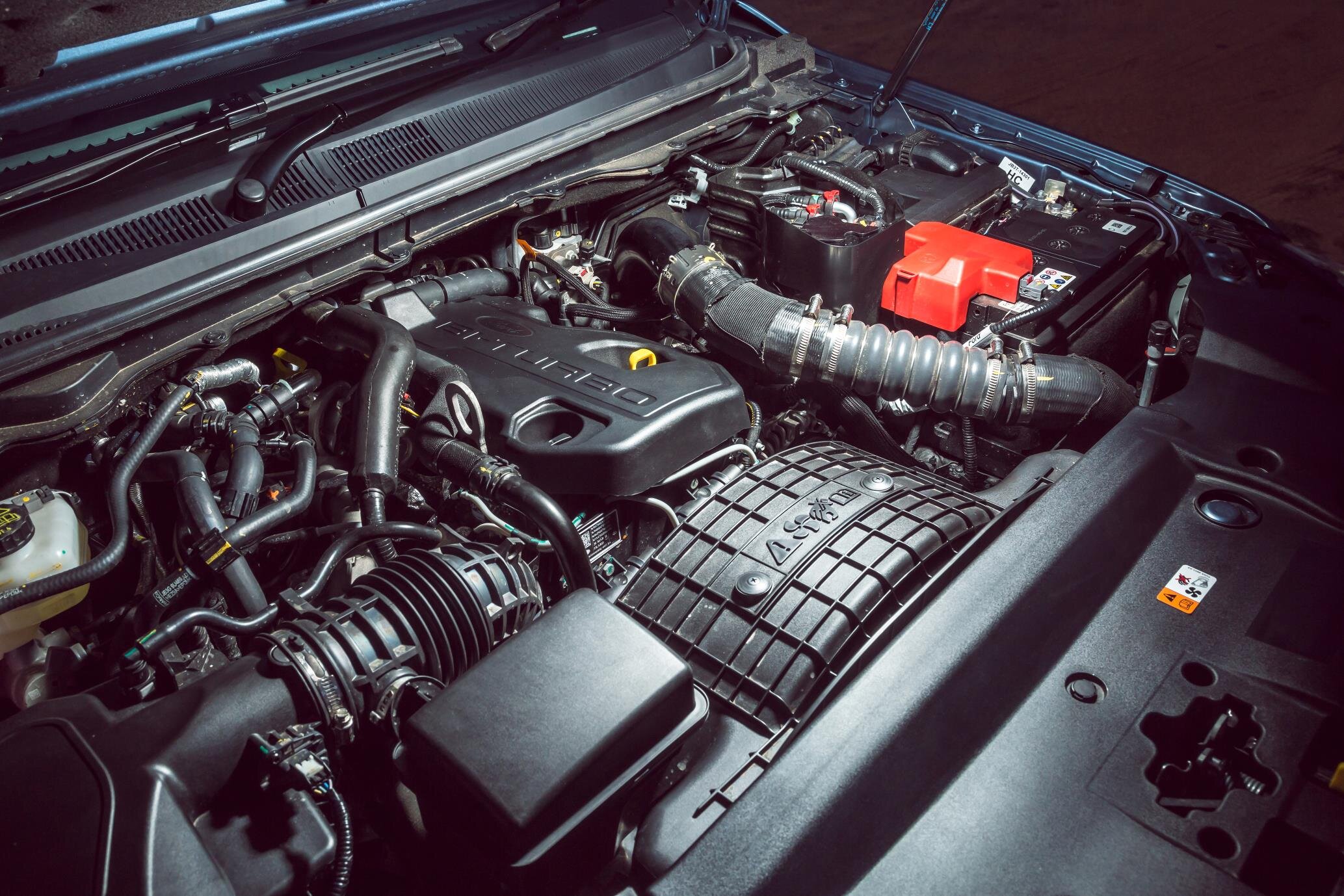
Credit: autoexpert.com.au
Coolant System Basics
An engine’s coolant system is its hero against the heat. It’s a setup that helps maintain an ideal temperature for the engine’s smooth operation. Without it, engines would overheat, leading to serious damage. Let’s explore what makes the coolant system so vital.
Components Of The Coolant System
The coolant system consists of several key parts:
- Radiator: Dissipates heat.
- Water Pump: Circulates coolant.
- Thermostat: Regulates coolant flow.
- Hoses: Carry the coolant.
- Coolant: The fluid that absorbs heat.
- Overflow Tank: Stores excess coolant.
How Coolant Maintains Engine Temperature
The coolant makes a continuous journey:
- Coolant absorbs engine heat.
- Moves to the radiator.
- Radiator cools it down.
- Cooled fluid flows back.
This cycle keeps the engine in a safe temperature range during operation. A well-maintained coolant system is crucial for engine health.
Symptoms Of Egr Valve Failure
A bad EGR (Exhaust Gas Recirculation) valve can lead to multiple issues in your vehicle. However, it’s unlikely to cause coolant loss directly. The symptoms of EGR valve failure are important to know for maintaining optimal engine performance. Recognizing these early can save time and money on repairs.
EGR valve malfunctions can result in a decline in engine performance. Keep an eye out for the signs:
- Loss of power when you need to accelerate.
- Rough idling or engine stalling when at a stop.
- A noticeable drop in fuel efficiency.
- Engine misfires, leading to irregular running.
Various symptoms can signal a failing EGR valve. Keep track of the following:
- Check Engine Light: Illuminates on the dashboard.
- Noises: Knocking or pinging during acceleration.
- Odor: Fuel smell due to improper combustion.
- Visual Inspection: Carbon build-up on the valve itself.
Assess your vehicle’s condition if these symptoms appear. A timely response can prevent further complications.
Diagnosing Coolant Loss Causes
When your vehicle starts losing coolant, it’s like a red flag waving that something is awry under the hood. Diagnosing Coolant Loss Causes is crucial to prevent engine overheating and further damage. It’s a detective game where every clue counts. Let’s dive into the common leak sources and diagnostic steps.
Common Sources Of Coolant Leaks
Understanding where coolant leaks typically occur can save time and money. The usual suspects include:
- Radiator: Prone to corrosion or damage.
- Hoses: Can develop cracks and holes over time.
- Water Pump: A failed seal or gasket can be the culprit.
- Head Gasket: When damaged, it can lead to major coolant loss.
- EGR Valve: Not a common source, but can cause coolant loss in certain scenarios.
Diagnostic Steps For Coolant Loss
A systematic approach helps identify the root cause efficiently. Follow these steps:
- Visual Inspection: Check for visible signs of leakage.
- Pressure Test: This helps detect leaks that aren’t visible.
- Check Engine Codes: Scan for any engine codes which can indicate the problem area.
- Cylinder Leak Down Test: To check for head gasket failure.
- Inspect EGR Valve: Though rare, a compromised EGR system may cause coolant loss.
Each step uncovers pieces of the puzzle, leading to a solution that prevents further coolant loss and engine issues.
Egr Valve And Coolant Loss Connection
EGR (Exhaust Gas Recirculation) valves are critical for reducing emissions by recirculating a portion of an engine’s exhaust gas back to the engine cylinders. A malfunctioning EGR valve can affect your car’s performance. One unusual issue it could cause is coolant loss. Understanding the link between EGR valve problems and coolant loss is essential for maintaining your vehicle’s health.
Can a Bad EGR Valve Lead to Coolant Loss?Can A Bad Egr Valve Lead To Coolant Loss?
While EGR valves deal with exhaust gases, they can indirectly lead to coolant loss. When an EGR valve is stuck open or closed, abnormal pressure builds up. This might cause engine overheating, which in extreme cases, forces coolant out of the system. Coolant can also be compromised if the internal cooling channels within the EGR system develop a leak. This is rare but possible.
Mechanical Insights Into Egr-coolant Interactions
EGR valves often have a cooler to lower the temperature of the exhaust gases. This cooler uses engine coolant to remove heat. If the EGR cooler fails, coolant may mix with exhaust gases or leak out. Here are mechanical scenarios where a bad EGR valve may lead to coolant loss:
- Leaky EGR Cooler: A crack inside the cooler can let coolant escape.
- Broken Gasket Seals: Damage to seals might allow coolant and gas to mix or leak out.
- Corrosion: Over time, EGR coolers can corrode, leading to holes and coolant loss.
Regular maintenance helps prevent these issues. Look for signs like milky oil (coolant in oil), white smoke from the exhaust, or a drop in coolant levels without visible leaks. Early detection can save you time and costly repairs.
Addressing Egr Valve Problems
Addressing EGR Valve Problems can be crucial for maintaining your vehicle’s health. The Exhaust Gas Recirculation (EGR) valve plays a vital role in reducing emissions and improving engine efficiency. However, a common question many car owners face is whether a faulty EGR valve can lead to coolant loss. Though this scenario is uncommon, it’s essential to understand how an EGR valve functions and the potential implications of its failure on your vehicle’s cooling system.
Repair Or Replace: Best Practices
Once you diagnose a problem with the EGR valve, the decision to repair or replace depends on a few factors. Here’s a table outlining the best course of action.
| Condition | Repair | Replace |
|---|---|---|
| Clogged Valve | Cleaning might suffice. | Not necessary unless damage is present. |
| Stuck Valve | Repair possible if not severe. | Recommended if the valve fails to move. |
| Leaking Valve | Sealing may temporarily fix. | Essential to prevent further issues. |
Tips To Prevent Future Egr Valve Issues
Preventing EGR valve problems saves time and money. Follow these tips:
- Regular Checks: Schedule routine inspections.
- Quality Fuel: Use high-grade fuel to reduce deposits.
- Carbon Cleaning: Perform periodic carbon cleaning services to prevent clogs.
- Timely Repairs: Address issues early to avoid escalation.
Maintain consistent upkeep of your vehicle’s EGR system to ensure longevity and prevent unexpected coolant loss situations. Keep in mind that while an EGR valve might not commonly cause coolant loss, a compromised cooling system can have widespread effects on engine performance. With the right care and attention, your EGR valve will operate smoothly, keeping your engine running efficiently and your emissions in check.

Credit: autoexpert.com.au
Frequently Asked Questions For Can A Bad Egr Valve Cause Coolant Loss
Can Egr Valve Problems Lead To Coolant Loss?
The EGR (Exhaust Gas Recirculation) valve itself won’t cause coolant loss. This component primarily recirculates exhaust gases and doesn’t interact with the coolant system. However, a related part failure, such as a leaking EGR cooler in some vehicle models, could potentially lead to coolant loss.
How Does A Faulty Egr Valve Affect Engine Performance?
A faulty EGR valve can significantly impact engine performance. It can cause rough idling, reduced power, increased fuel consumption, and sometimes even engine overheating. These issues occur because the valve fails to regulate the flow of exhaust gases properly.
What Are The Symptoms Of A Bad Egr Valve?
Common symptoms of a bad EGR valve include poor engine performance, increased emissions, and a check engine light. You may also notice rough idling or stalling, and in some cases, a pinging or knocking sound during acceleration due to early detonation.
Will A Check Engine Light Indicate Egr Issues?
Yes, a check engine light can indicate EGR valve issues. Modern vehicles’ onboard diagnostics systems can detect irregularities with the EGR system, triggering a fault code and turning on the check engine light. However, an OBD-II scanner is needed to confirm the specific code.
Conclusion
Troubleshooting an EGR valve for coolant loss is essential. If your vehicle shows signs, prompt inspection can prevent further damage. Remember, a faulty EGR valve may contribute to coolant issues. Seek professional advice to maintain your car’s health and performance.
Stay vigilant for a smooth, trouble-free drive.

